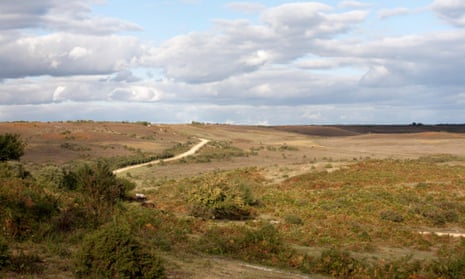The UK is failing to meet its international obligations to protect its most important wildlife sites and vulnerable species, and now lags behind most other EU countries on key criteria, according to figures posted online by the European Environment Agency.
With the environment high on the agenda at the G7 summit in Biarritz this weekend, the data will be an embarrassment to ministers who have repeatedly pledged to protect the environment – despite imposing savage cuts on England’s statutory nature conservation agency, Natural England.
Under the EU’s habitats and birds directive, member states commit to improve the physical protection of individual specimens and the conservation of core breeding and resting sites for rare and threatened species. The EU also sets rules regarding animal welfare and works with the international community to fight illegal wildlife trade.
Member states have to report every six years on progress. But the draft figures for the UK for 2013-2018 show it faring worse than many other member states and making no progress on key measures.
During the period, the draft data show 82% of the UK’s designated habitats to be in “bad” or “poor” condition, unchanged from the last reporting period of 2007-12. The percentage in a “bad” state was 71%, compared with 36% in Germany and 32% in France.
The report also shows 64% of species assessed as being in either “bad”, “poor” or “unknown” condition, up from 57% in 2007-12.
Kierra Box, a Friends of the Earth campaigner, said: “It turns out that systematically under-funding agencies that protect and restore nature in the UK was a mistake.
“If we cannot trust our government to abide by shared laws that protect biodiversity as a member of the EU, how can we trust them to make good on promises of ambitious environmental laws after Brexit?
“Knowing all this, how can a government committed to global biodiversity and the climate emergency leave the EU without a dramatic increase in the funding of environmental monitoring and restoration, and the establishment of a strong, independent environmental watchdog? The UK government should be ashamed of these figures and rapidly commit to adopt EU environmental standards with a view to making them stronger.”
As a member of the EU, the UK would previously have been held to account by the European Commission for its failures, and would ultimately have been subject to sanctions, including heavy fines. However, the commission is no longer hearing new complaints against the UK for failing to implement EU environmental law.
If the UK leaves as planned on 31 October, although the nature directives will have been written into the UK statute book, environmental organisation say there will be no means to ensure their implementation. Government pledges to put in place legislation to set up a new environmental watchdog have not yet been fulfilled.
